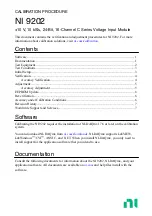
ALLACCIAMENTO IMPIANTO ELETTRICO
Prima del collegamento elettrico verificare che l’impianto di
alimentazione al sollevatore sia dotato delle protezioni previ-
ste dalle norme vigenti nel paese in cui
viene installato.
Eseguire il collegamento del circuito elettrico
dei microinterruttori funi, allacciandosi nelle
apposite scatole di derivazione poste a metà
delle traverse ed effettuando i collegamenti
come indicato nello schema topografico.
I cavi elettrici in uscita dal quadro contrasse-
gnati con i numeri:
·
3-4 va collegato al microinterruttore fine
corsa salita sul contatto NC.
·
0-7 va collegato all’elettrovalvola di disce-
sa (1 Fig. 47).
·
0-31 va collegato all’elettrovalvola di de-
viazione (2 Fig. 47).
·
0-39 va collegato all’elettrovalvola pneu-
matica.
Collegare i fili degli elettromagneti di sgancio
dei martelletti nelle scatole di derivazione po-
ste a metà delle traverse, riferendosi, per i
collegamenti, allo schema topografico.
Aprire il quadro elettrico ed inserire l’apposito
cavo di alimentazione (sez. min. 4 x 4mm2)
attraverso il relativo passacavo che è posto
nella parte superiore del quadro elettrico.
Collegare il cavo ai morsetti presenti nella
parte inferiore del quadro, compreso quello
di terra di colore giallo/verde.
Aprire la scatola dei contatti del motore ed
effettuare il collegamento come indicato in fi-
gura 48, a seconda della tensione con cui
verrà alimentato il ponte.
Collegare la protezione termica (Rif. 8-9 Fig.
48).
I
ATTENZIONE
I
l quadro elettrico viene predisposto dal
costruttore per il funzionamento a 400V
trifase, pertanto se si desidera far funzio-
nare il ponte a 230V trifase, occorre cam-
biare il collegamento sul trasformatore
(vedere morsettiera sul trasformatore
stesso).
Fig.48
Collegamenti motore e trasformatore
Una volta accertati che tutto corrisponda, chiudere il quadro e pro-
vare, salendo, il senso di rotazione del motore che deve essere
uguale a quello indicato sulla relativa etichetta posta sul motore
stesso.
Se il senso di rotazione non corrisponde con quello indicato dalla
freccia, riaprire il quadro, invertire due fili delle fasi agganciate
come in figura 46, richiudere il quadro e verificare il senso di rota-
zione.
I
ATTENZIONE
TUTTE LE OPERAZIONI INDICATE SOPRA
DEVONO ESSERE ESEGUITE UNICAMENTE DA
PERSONALE SPECIALIZZATO.
ELECTRICAL SYSTEM CONNECTION
Before connecting the electric system, make sure that the po-
wer supply plant to the lift is equipped with the protection de-
vices required by current stand.
Connect the electrical circuit of the cable mi-
cro switches, by fastening them to the suita-
ble connector blocks placed in the central
part of the posts and following the topograp-
hic diagram.
The electric cables left the board marked
with the numbers:
·
3-4 connected to the microswitch on the
NC contact.
·
0-7 connected to the lowering solenoid
valve (1 Fig. 47).
·
0-31 connected to the L.T. deviation so-
lenoid valve (2 Fig. 47).
·
0-39 connected to the pneumatic soleno-
id valve.
Connect the wires of the safety wedge rele-
ase electromagnets to the connector blocks
placed in the central part of the cross-pie-
ces, always complying with the topographic
diagram.
Open the electric panel and fit the suitable
supply cable (min. section 4x4 mm2) thro-
ugh the relevant cable-holder placed - for
both models - in the electric panel upper
part.
Connect the cable to the terminals inside
the panel lower part, including the yel-
low/green ground terminal.
Open the motor contact box and make the
connection as shown on fig. 48, depending
on the lift supply voltage.
Connected the temperature protection (Ref.
8-9 Fig. 48).
I
WARNING
The electric board is arranged by the ma-
nufacturer for operating at 400V,
three-phase. Ttherefore, if you wish the
lift to be operated at 230V three-phase,
you should change the connection on
the transformer (see terminal board of
the transformer).
Fig.48
Motor connections and transformer
Once checked if everything is complying, close the panel and
check, by making the lift rise, the motor rotation direction: it should
be the same of the one on the plate of the motor.
If the rotation direction isn’t complying, open the panel again, re-
verse two wires of the phases as per fig. 46, close the panel again
and check the rotation direction.
I
WARNING
ALL THE ABOVE OPERATIONS MUST BE MADE
ONLY BY SKILLED PERSONNEL.
29
Fig.46
400V
230V
Fig.47
1
2
Summary of Contents for 450LT
Page 1: ...I PONTE SOLLEVATORE A 4 COLONNE GB 4 POST LIFT 450LT ATLT...
Page 2: ......
Page 13: ...SCHEMI ELETTRICI ED OLEODINAMICI WIRING DIAGRAMS AND HYDRAULIC 11...
Page 42: ...COLONNE POSTS S ULEN COLONNES COLUMNAS...
Page 43: ...TRAVERSE CROSSBEAMS TRAVERSE TRAVERSES TRAVERSA OS...
Page 44: ...PEDANE PLATFORMS FAHRSCHIENE CHEMINS DE ROULEMENT PLATAFORMAS...
Page 45: ...LIFT TABLE LIFT TABLE...
Page 46: ...CILINDRO CYLINDER ZYLINDER V RIN CILINDRO...
Page 47: ...CILINDRI LIFT TABLE LIFT TABLE CYLINDERS...
















































